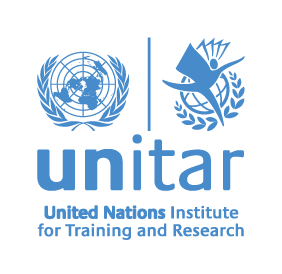Welcome to the Sound Management of Chemicals (SMC) in Small and Medium Sized Enterprises (SMEs), Platform of tools and methodologies for SMC implementation
UNEP, together with UNITAR, established this platform to support SMC-related service providers in the implementation of sound management of chemicals in SMEs, either chemicals producers or users.
An expert group screened tools and methodologies from more than 20 international organizations, national entities and the private sector in order to identify the tools and methodologies that would be most relevant for service providers working with SMEs.
The expert group was composed of National Cleaner Production Centers (NCPCs), members of the Network of Resource Efficient and Cleaner Production Centers (RECPnet) working on the sound management of chemicals with the private sector, representatives of the International Council for Chemicals Associations (ICCA), the Strategic Approach to International Chemicals Management (SAICM), and the United Nations Industrial Development Organization (UNIDO).
The SMC Tools Platform aims to:
- Serve as a logical, easy-to-use online system to provide free access to SMC service providers to tools and methodologies to support SMEs, in developing countries and economies in transition, to develop and implement sound management of chemicals.
The focus of the SMC Tools Platform is not country specific. Therefore, the scope of the Platform does not include providing guidance on regulatory frameworks relevant to the countries where SMEs operate.
Implementing sound management of chemicals
Chemicals are used in a wide variety of products and processes and as such, they are major contributors to national and international economies. The expected continuous growth of the global chemical production by 2020 (Global Chemicals Outlook, 2013) highlights the need for improving the sound management of chemicals, which will impact considerable number of economy sectors in which chemicals are used.
At the international level, the agenda on chemicals continues to gain importance. The Strategic Approach to International Chemicals Management (SAICM) is a policy framework to promote the sound management of chemicals and achieve the goal that by 2020, “ chemicals are used and produced in ways that minimize significant adverse impacts on human health and the environment ”. Meanwhile, the 2030 Agenda for Sustainable Development reflects the importance of managing chemicals, addressing the sound management of chemicals under the Sustainable Consumption and Production Development Goal (target 12.4).
The additional filters such as SME Activity, user expertise, language, etc., are available to refine and tailor the search according to the particularities of the SMEs. The company type, i.e. formulation of chemicals, industrial users of chemicals, synthesis of substances, for which the tools and methodologies can be applicable is specified when accessing the information of the tools and methodologies, and thus it is not added as a filter option.
By clicking on the question mark symbol, a description of each search filter option is provided
The Tools and Methodologies available in this Platform for the sound of management of chemicals are displayed below. Please note that T refers to Tools and M to Methodologies.
Methodologies are designed guidances to systematically analyze the issue and support the user to find the most appropriate solution to address the issue.
Tools help companies to resolve a specific problem, and thus are limited in scope.
{{ tools_shown_count }} results
Methodologies
{{ tool.id }}: {{ tool.name }}
{{{ tool.description }}}
Tools
{{ tool.id }}: {{ tool.name }}
{{{ tool.description }}}

